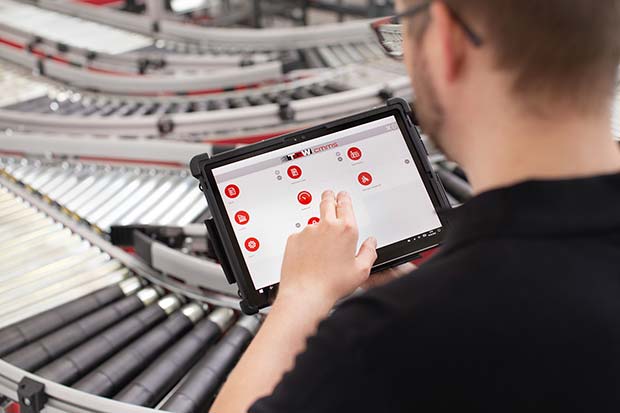The coronavirus pandemic and the establishment of resilient supply chains are driving the demand for retrofit solutions in the material handling industry. Retrofit is a growth market. TGW is handling almost five times as many retrofit projects annually compared to ten years ago.
 “We have sold many more installations in the past five years, and they need an upgrade now. On the other hand, companies are becoming increasingly aware that they will only get ahead of the competition if they perfectly adapt to their customers’ needs. System operators also recognize that keeping delivery promises, and thus establishing a resilient supply chain is becoming more and more important. Finally, the coronavirus pandemic has prompted an abrupt rise of e-commerce in some sectors,” Markus Kammerhofer, Head of Retrofit Sales at TGW Logistics Group says.
“We have sold many more installations in the past five years, and they need an upgrade now. On the other hand, companies are becoming increasingly aware that they will only get ahead of the competition if they perfectly adapt to their customers’ needs. System operators also recognize that keeping delivery promises, and thus establishing a resilient supply chain is becoming more and more important. Finally, the coronavirus pandemic has prompted an abrupt rise of e-commerce in some sectors,” Markus Kammerhofer, Head of Retrofit Sales at TGW Logistics Group says.
Avoiding standstills
A retrofit primarily involves modifying and expanding material flow systems to allow the system operator to optimally address their customers’ needs. Today, companies cannot afford inefficiencies, let alone standstills. Long throughput times are a competitive disadvantage in today’s world of high-performance logistics.
“If a company waits too long with modernization, there is a chance that spare parts will run out or that technology will no longer be available. A fundamental part of our retrofit projects is adopting the newest technology and keeping it up to date for as long as possible.”
There are two options in modernisation projects: a big bang or a step-by-step approach. The latter has become increasingly relevant because companies do not want to run the risk of something going wrong with the big bang approach. Additionally, fewer and fewer companies take plant holidays, meaning that the system has to run with as few interruptions as possible. “We have clients that generate several million euros in revenues in a single day at the central warehouse. In such cases every hour that the intralogistics system is at standstill matters. Such companies stretch modernisation projects out over half a year or longer and we work on the system while it is running. Smaller retrofits can be accomplished over just a few weekends,” Kammerhofer says.
In every retrofit project, exact analyses and perfect, detailed planning are essential. “First we analyse the current state of the technology and the on-site conditions and look at the customer’s requirements. Creating a functional specification is obligatory. The existing system’s documentation can serve as the basis for the new process description. If the material flow systems have to be replaced, you also have to be mindful of the interfaces with the subordinate systems, such as the programmable logic controller (PLC). In any case, you have to develop a well-wrought changeover plan to ensure the availability of the goods.”
Retrofit advantages
Just upgrading the software to the current state-of-the-art increases functionality. New warehouse management systems enable better connectivity with other systems, such as manufacturing execution systems, supply chain management systems and enterprise resource planning systems, allowing for a more continuous data flow. The goal is always the real-time exchange of information along with the value-added chain. That is a prerequisite for companies to be able to control their sourcing and material flow as efficiently as possible. More and more TGW are being asked if autonomous technologies such as automated guided vehicles or robots can be integrated into the overall system. They offer more flexibility and easier scalability. State-of-the-art warehouse management systems also have the option of touchscreen controls. Their operation is intuitive, employee training simple. This is also true of the system visualisation’s continuous zoom option. Users can zoom in down to the system’s sensor level to find defective components, for example. Maintenance is also easier after a retrofit because modern components have been incorporated into the system.
But the most important goal is and remains to be, to fulfil the end customer’s wishes faster than the competition. “If you cannot meet new needs, you lose customers. For example: in the past, a customer would be satisfied with one delivery containing 100 order lines. Today, that customer wants the same volume delivered to ten different places, at ten different times. Why? Because that is common practice in big B2C platforms, and the customer wants to take advantage of that flexibility in their own company. That’s why the system operator has to look at the big picture, and in that case, investing in a retrofit quickly pays off.”




Comments are closed.